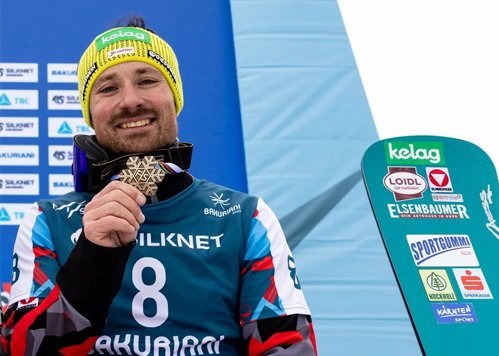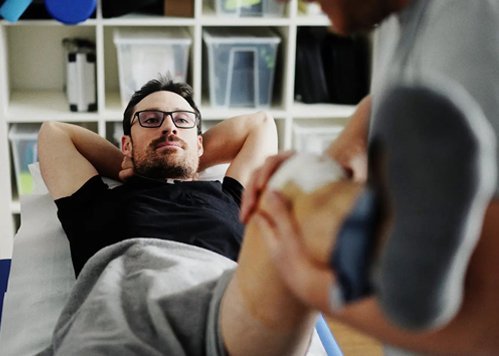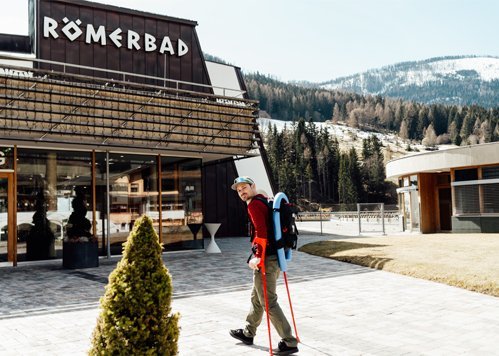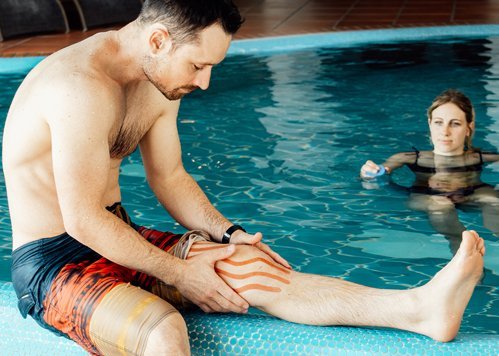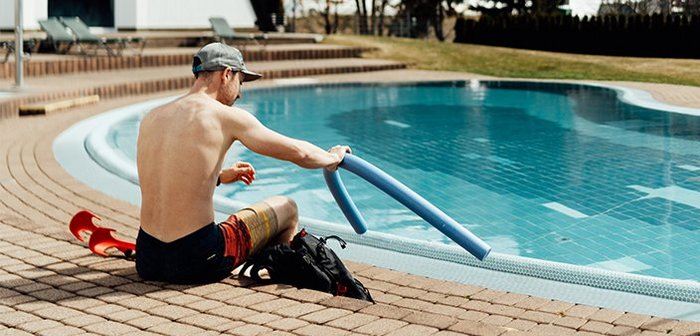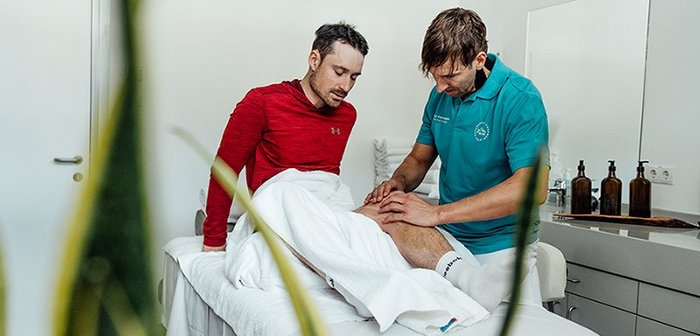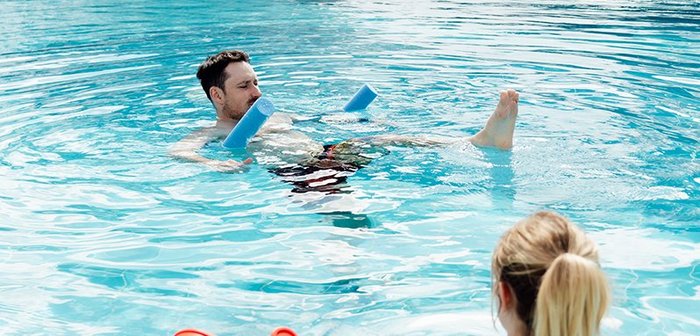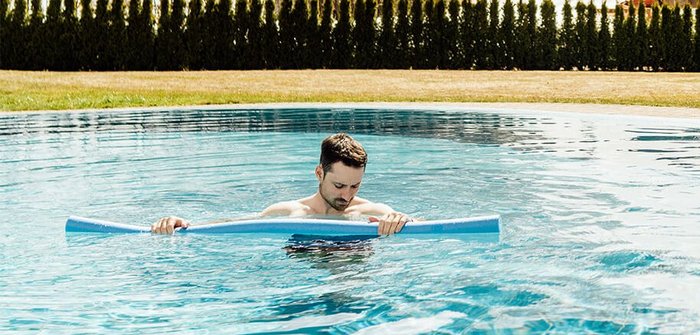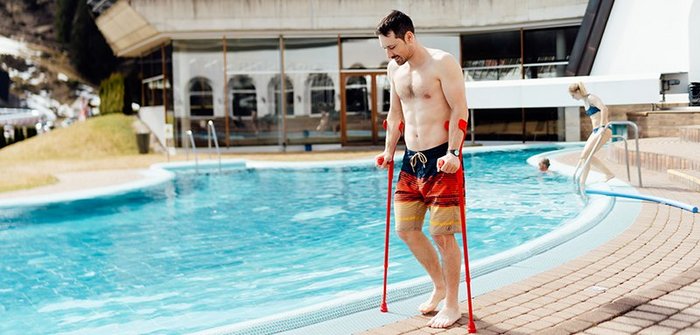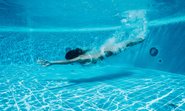Diagnosis of cruciate ligament rupture. For many athletes, this means not only the end of the current season, but also the start of a long and costly treatment process. You have to treat the mindset as well as the injury. In an exciting guest article, professional snowboarder Alex Payer tells all about his own experiences with the injury and his path back onto the slopes. He takes us from the surgical table, through the many questions and the advantages of therapy in thermal water. Happy reading!
From the World Championship to the surgical table.
No athlete ever plans to fit an injury into their schedule – and certainly not into the middle of the competitive season. But things usually turn out differently than we hope and rarely as we expect them to. Unexpectedly, I tore my anterior cruciate ligament in February 2023 at the Snowboard World Championships in Georgia. Yeah, sometimes life throws you a curve ball. First I won the bronze medal at the World Championships and then one day later I’m already on the plane heading to Graz to find out the exact extent of the injury.
Diagnosis: Anterior cruciate ligament tear & minimal injury to the meniscus.
It was a classic sports injury and actually rather inflationary, especially in winter sports. However, the fact that an injury is “common” doesn’t necessarily make it better and it has to be said: “Cruciate ligament surgery is definitely not a walk in the park”.
Even if, like me, you are rushed into theatre with a lot of self-confidence, you are very quickly brought back down to earth afterwards. The abilities that you lose from undergoing such a surgery are huge: from muscle loss, to the loss of the ability to control individual muscle groups, to a changed gait pattern.
This led me to my next important question: “How long does the fun last?”
The good thing about common injuries such as cruciate ligament tears is that they are very well researched and so the duration of the healing process can also be predicted well. It takes about six months to get back on your “old” feet. On my way back up, I discovered water-based therapy and spent quite a bit of time in the cool (or preferably warm) water.
When can you get into the water?
Jumping into the water is not recommended during the first two weeks after the surgery, as the stitches have to be removed beforehand and the scar tissue should be completely smooth and free of injury. Otherwise, there is a significant risk of infection. However, anyone who feels unsure about this should definitely seek medical advice.
For those who, when they think of a visit to the thermal spa, immediately think of the sauna area – well they have to hold their horses for a bit. In case of scarring and after surgeries, you should definitely wait 8 weeks before throwing yourself into hot water again. The wounds must heal completely beforehand, both inside and outside.
Goals of the first rehab phase.
Each of us will try to divide the rehab into individual phases to get a better overview of what’s actually possible. Of course, you should be aware that these phases must be discussed with the attending doctor and physiotherapist, but there are still some fixed points.
The first phase actually starts at the bedside and primarily deals with pain reduction and reducing swelling. You can expect this to take up to 6 weeks, and as soon as you’re allowed into the water, things start to look up, especially as far as the annoying swelling is concerned.
Here, we have to draw your attention to the hydrostatic pressure in particular, since this has a positive effect on the swelling. From a water depth of 120 cm, this pressure is twice as high as our blood pressure and helps our body to remove fluid via the lymphatic system. If you combine this with the massage technique of lymphatic drainage directly at the injury site (as is possible in the Thermal Römerbad), this is even faster.
Another aspect of exercising in thermal water is that the mobility of the knee joint is better under water pressure, meaning you can work on your prescribed exercises better and more accurately. That may sound a bit trivial now, but it makes an enormous difference. It’s due to the compression caused by the water pressure. The goal is always to get back a full range of motion.
Walking tall.
From week 4 at the latest, you find yourself longing to get rid of those crutches more and more. But be careful, your gait pattern will have changed massively after a few weeks with relief and needs to build up again slowly. A good way of doing this is to go into deeper water and simply walk. Whether on your tiptoes or heels, you have to practice all ways of walking; it all must be experienced and learned again. So get creative and leave your crutches at the edge of the pool. The buoyancy takes care of the rest.
As soon as you feel safe in the water and your gait is reasonably “smooth”, you can even think about cardiovascular training. So fast walking, aqua jogging or gentle crawling legs are just a few examples of forms of exercise.
You can also start with little jumps in the water. It’s important that you feel your way from deep to shallow water and develop the structure slowly. Personally, I’ve tried to increase my time in the water with each visit. At the beginning it was only 5 minutes in three series, but after a few weeks I built this up to sessions lasting 20 minutes each.
There’s no exact recommendation here – you have to work according to what you feel is right for you. Every knee is different, meaning every visit to rehab is very individual. That’s why it’s essential to trust your own feelings.
One thing you can be sure of, though:
Time in the water is definitely well worth it and increases your own well-being and confidence in your knee tremendously. :)
All the best,
Alex
Instagram: alexanderpayer
Website: https://www.alex-payer.at/

